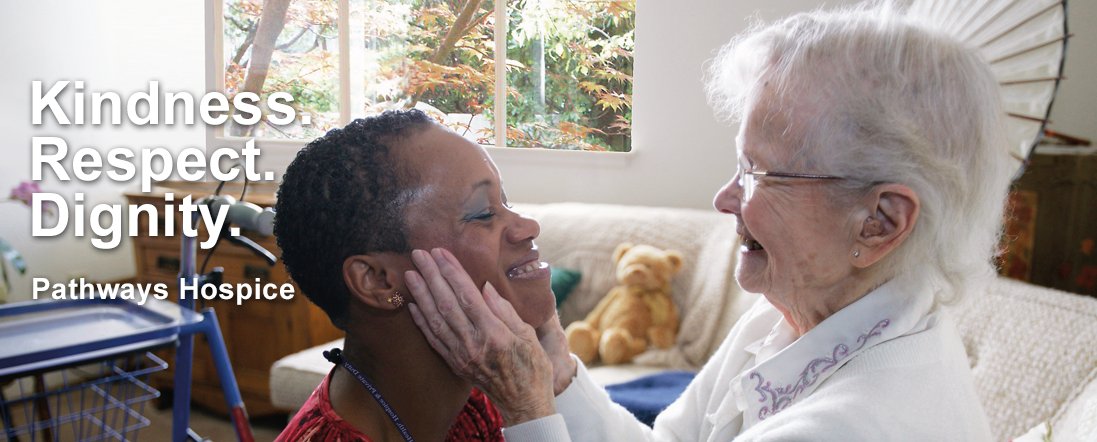
Hospice: Exploring Key Concepts of the Interdisciplinary Team
Hospice isn’t just one person, place, or setting. Hospice is comprised of many pieces of the same puzzle, with several members of the team working together to ensure the patient’s and the family’s needs are met during this stressful time. Indeed, hospice is made up of an interdisciplinary team of healthcare professionals led by a registered nurse (RN). At the heart of every hospice team, there should be four main components: medical doctors, nurses, social workers, and chaplains, says MedicineNet.
In general, the interdisciplinary hospice team will include the following:
- An aide for personal care, companionship and support
- A social worker to counsel and connect families with strong community support systems
- A chaplain for spiritual support and to connect the family with members of their faith community
- A physician who will review care for optimal patient management, support the patient’s primary care doctor, and visit the patient when required
- A pharmacist to work in conjunction with physicians and nurses to guard against unwanted drug interactions and side effects
- Vigil volunteers to support patients and families at the end of life
Some hospice providers even go so far as to offer access to additional professionals outside the formal scope of the team, such as acupuncturists, music therapists, massage therapists or even art therapists. Anything that is thought to improve the symptoms or overall quality of life for the patient can be considered.
According to WebMD, your loved one is entitled to 24/7 access to members of the hospice team.
Volunteer Opportunities
Aside from trained hands-on care, hospice teams also provide education for caregivers so they are equipped with the skills they need to best care for their loved one. RNs are typically made available to them 24/7 by phone, or after office hours if necessary. Many hospice providers have a network of volunteers who can help families with every aspect of their hospice experience. For example, Pathways Home Health and Hospice offers volunteer opportunities for:
- Patient and Family Support Volunteer
- Veteran Volunteer
- Office Volunteer
- Licensed/Certified Therapies Volunteer
- Special Projects Volunteer
- Corporate Volunteer
- Bereavement Intern Volunteer
- Foundation Volunteer
As such, Pathways can give interested volunteers specialized training to help them strengthen skills in cross-cultural, end of life care. Volunteers are a crucial part of the team, as they assist patients with meal preparation, errands, companionship, and basic chores around the house. They may also assist home aides, whose job it is to help patients with personal care such as bathing and feeding.
Core of Collaboration
Your team may invite you to sit in on meetings and sessions to offer input and determine next steps. This is an important part of the process. Studies by the National Institutes of Health show that caregiver participation in team meetings has a positive impact on collaborative communication between caregivers and team members.
Meetings between the interdisciplinary team take place once a week or once every two weeks, depending on the situation. During these meetings, team members discuss the patient’s progress, any issues that have arisen since the last meeting, and the overall plan of care. This plan of care should be reviewed on a regular basis by medical directors, nurses, social workers, and other ancillary staff who have a direct impact on patient care. This is to ensure progress keeps moving forward and any key factors are addressed in a timely manner.
The Team: Key Facilitators
According to NCBI, the interdisciplinary team is an essential aspect of any organizational work setting, acting as a key facilitator in achieving positive, cost-effective outcomes. Nowhere is this more important than in a health care setting, where demands of this environment require the expertise and knowledge of several specialists working together to solve hospice patient care problems. Studies reveal that interdisciplinary communication results in improved patient and family outcomes, as well as diagnostic abilities of health care professionals — more so than if individual health professionals were working on their own in isolation.
It’s the job of the interdisciplinary team to identify clear roles of each member and facilitate those roles accordingly. The team must:
- Manage pain and symptoms for patient
- Provide emotional support for patient and family
- Provide necessary medications, medical supplies, and equipment to maintain comfort
- Educate family members on how to care for their loved one
- Offer specialized services such as speech and physical therapy
- Make short-term inpatient care available when pain becomes unbearable to manage at home, or the caregiver needs time off
- Provide grief support to surviving family members
It’s important for all key members to collaborate, check in with each other regularly, and pool resources to ensure the best possible well-rounded care for the hospice patient.
Contact Pathways Home Health and Hospice
To learn more about how the interdisciplinary hospice team works for patients and families, contact us at 888-755-7855. We would be happy to explain our services and connect you with the right team for your loved one.

